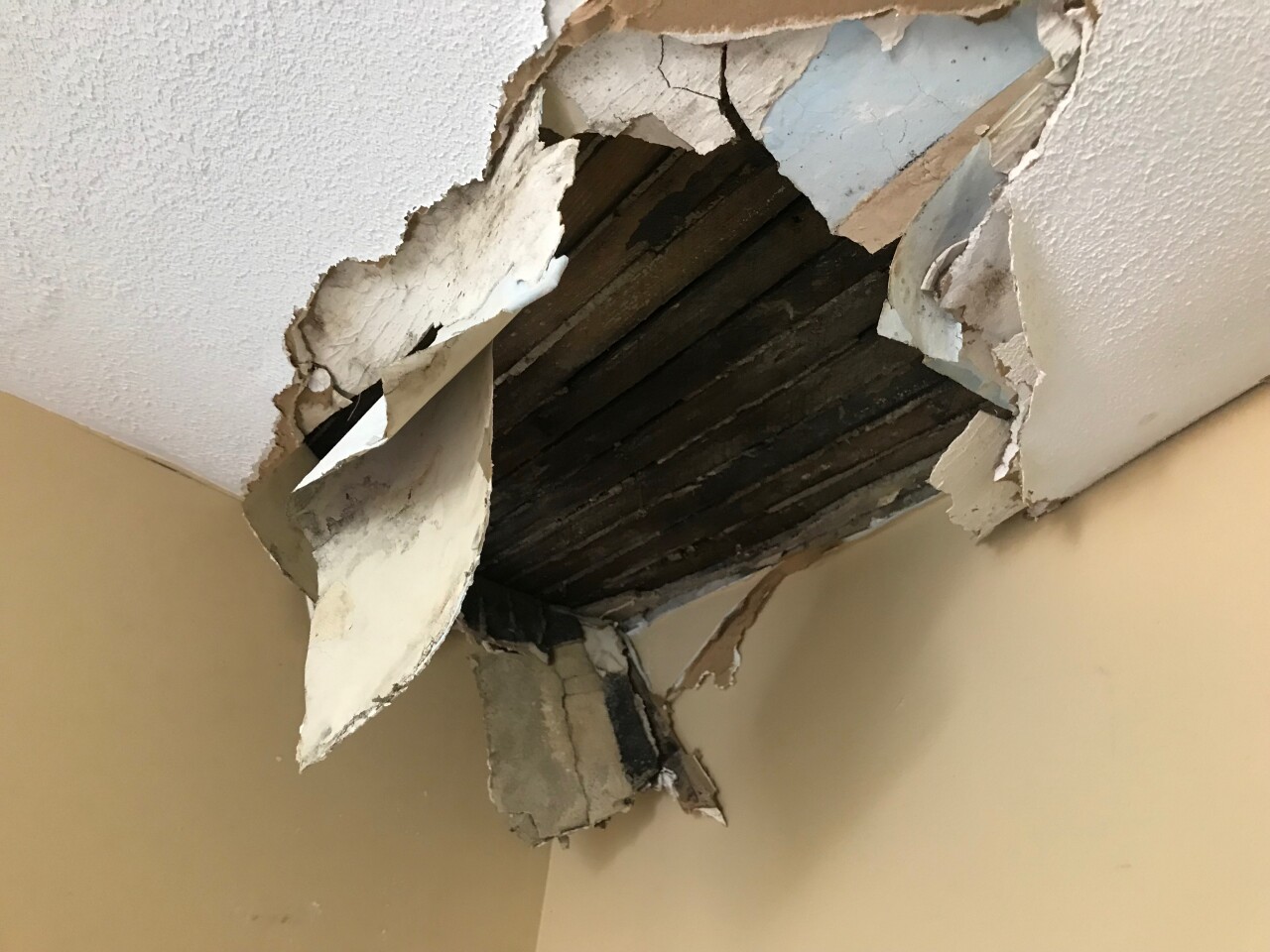A leaking ceiling can be more than just an inconvenience; it can pose serious risks to the structural integrity of your home. In this comprehensive guide, we will delve into the potential dangers of a leaking ceiling, addressing the critical question: “Can Leaking Ceiling Collapse?” Gain insights into the causes, signs, and proactive measures to safeguard your home from potential disasters.

Can Leaking Ceiling Collapse: Unraveling the Threats
The Silent Threat: Understanding the Dangers of a Leaking Ceiling
- Compromised Structural Integrity: The Domino Effect: A leaking ceiling is indicative of water intrusion, which, if left unaddressed, can compromise the structural integrity of your home. Over time, water weakens the building materials, including drywall, wood, and insulation. The cumulative effect can lead to a catastrophic collapse.
- Mold and Mildew Infestation: A Health Hazard: Persistent leaks create a conducive environment for mold and mildew growth. Beyond structural concerns, these fungi pose health risks, triggering respiratory issues and allergies. The combination of compromised structural elements and health hazards makes a leaking ceiling a multi-faceted threat.
- Electrical Hazards: Sparks of Danger: Water and electricity are a dangerous combination. A leaking ceiling can result in water seeping into electrical systems, leading to short circuits, electrical fires, or shocks. The potential for electrical hazards adds another layer of risk associated with ceiling leaks.
Can Leaking Ceiling Collapse: Assessing the Risks
In this section, we will explore the specific risks associated with a leaking ceiling and the signs that indicate a potential collapse.
Signs of Impending Collapse: Identifying Red Flags
- Sagging Ceiling:A visibly sagging ceiling is a clear indication of structural damage. The weight of accumulated water weakens the ceiling materials, causing it to bow or sag. If left unattended, this can progress to a complete collapse.
- Visible Water Stains:Water stains on the ceiling are not just aesthetic concerns; they signify ongoing leaks. The presence of water stains indicates that water has penetrated the ceiling material, potentially compromising its structural integrity.
- Cracks and Peeling Paint:Structural stress from water damage can manifest as cracks or peeling paint on the ceiling. These physical signs suggest that the ceiling is no longer able to support its weight and may be at risk of collapse.
The Immediate Danger: Addressing a Leaking Ceiling
- Identify and Stop the Source:The first step in addressing a leaking ceiling is to identify and stop the source of the water intrusion. Whether it’s a leaky roof, burst pipes, or plumbing issues, prompt action is crucial to prevent further damage.
- Professional Assessment:Engage the services of a qualified professional to assess the extent of the damage. Structural engineers and contractors can provide insights into the severity of the issue and recommend appropriate remediation measures.
- Ceiling Repairs and Reinforcement:Depending on the extent of the damage, repairs may range from patching and repainting to more extensive measures such as reinforcing or replacing weakened structural components. Timely and thorough repairs are essential to prevent a potential collapse.
Prevention Measures: Safeguarding Your Home
1. Regular Inspections:
Conduct routine inspections of your home’s roof, plumbing, and ceilings. Early detection of leaks allows for prompt intervention before significant damage occurs.
2. Adequate Ventilation:
Ensure proper ventilation in areas prone to moisture, such as bathrooms and kitchens. Adequate airflow helps prevent the conditions conducive to mold and mildew growth.
3. Immediate Repairs:
Address any leaks or water damage promptly. Ignoring small issues can lead to more significant problems over time, increasing the risk of a ceiling collapse.
Conclusion: Taking Action Against the Threat of a Collapsing Ceiling
A leaking ceiling is not just a cosmetic concern; it poses real and immediate risks to your home and the safety of its occupants. By understanding the potential dangers and taking proactive measures, you can mitigate the risks associated with a leaking ceiling and safeguard your home from the threat of collapse.
Remember, swift action and regular maintenance are your allies in preventing structural issues and ensuring the long-term stability of your home.
Read too: Understanding Asbestos in Ceiling Plaster and Ensuring a Safe Home: Unveiling the Dangers
